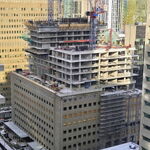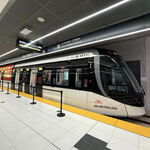Sauga89
Active Member
Since the MTO released a map showing the OL going to the suburbs, it is not that off topic.
Is this the MTO document you're referring to? I believe it calls for an Ontario Line extension to Pearson, and separately, also calls for a new rail line between Burlington and Oshawa along the 403/407. It does not call for an Ontario line extension into the suburbs.
To get back to the Ontario line, I kind of like a Sheppard extension west to Pearson better, with only a GO line along the 407.
I also wonder if a heavy rail line along the 407 could include bypass tracks for CN. There's a 15 km long section of CN track between CN's Macmillan Yard and Unionville, that to my eyes, looks more densely populated than the land along the 407. I was thinking (and someone can tell me why I'm an idiot), that if you built a heavy rail corridor along the 407 for GO, you could add a couple tracks for CN, pay CN a relocation fee and then build a rapid transit line along CN's current 15 km corridor. That makes more sense to me than building an Ontario line extension along the 407 parallel to a GO line.
You could also then extend that new line south along the Barrie GO line to the Finch hydro corridor, and reach Pearson that way if you don’t like a Sheppard west extension.
(I will note that this assumes a heavy rail line along the 407 is even possible. I am not an engineer. Given that the Ontario Liberals proposed the missing link, I am assuming heavy rail along the 407 is not impossible.)




